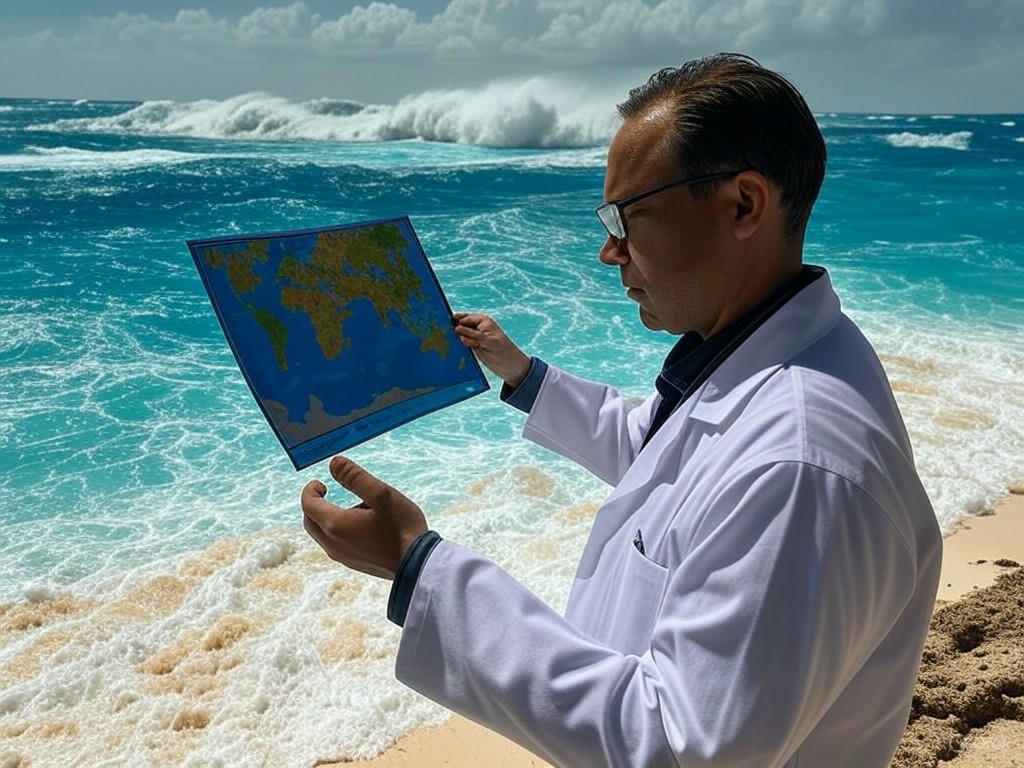
2025 Hurricane Season: What La Niña’s End Means for Storms
Understanding La Niña’s Departure and Its Effect on the 2025 Hurricane Season
As we head into the 2025 hurricane season, experts are watching a major shift in ocean patterns: La Niña has wrapped up. This change could ramp up storm activity, making it essential for folks along the coasts to get ready. Forecasters from Colorado State University are calling for about 17 named storms, 9 hurricanes, and 4 major ones—this is well above the usual, so staying informed matters now more than ever.
Have you ever wondered how these global weather shifts affect your local area? With the 2025 hurricane season looking busier, it’s a reminder that even neutral conditions can set the stage for intense weather. Communities from Florida to Texas should start reviewing their emergency plans today, as this forecast highlights the real-world risks ahead.
What La Niña’s End Signals for the 2025 Hurricane Season
La Niña typically cools parts of the Pacific, often leading to more storms in the Atlantic, but its exit puts us in a neutral phase of the ENSO cycle. Without the usual disruptions from El Niño, we’re seeing calmer winds that could let storms build strength more easily. As one expert from Colorado State University explained, this means less wind shear to break up developing hurricanes, potentially making the 2025 hurricane season even more active than predicted.
Imagine tropical systems gaining power without much resistance—it’s exactly what might happen this year. This transition is a key reason why the 2025 hurricane season could see storms forming faster and stronger, urging everyone in hurricane-prone zones to double-check their preparations.
Key Factors Shaping the 2025 Hurricane Season
Warm Atlantic Waters and Their Role in the 2025 Hurricane Season
Ocean temperatures are like fuel for hurricanes, and right now, the Atlantic is warmer than average. The Gulf of Mexico and Caribbean are packed with extra heat, which could supercharge storm development during the 2025 hurricane season. Even if it’s not as extreme as last year, this warmth combined with other factors might lead to some powerful hurricanes.
It’s fascinating how these warm waters interact with atmospheric conditions—think of it as a recipe for intense weather. For anyone living near the coast, understanding this could mean the difference between being caught off guard and staying safe.
ENSO Conditions and Wind Patterns in the 2025 Hurricane Season
The ENSO cycle, including the shift from La Niña, plays a big role in wind shear across the Atlantic. Forecasts point to neutral or weak La Niña vibes during peak season, which typically means lower wind shear. 2025 hurricane season models suggest this will help storms organize without getting torn apart.
Wind shear can be a storm’s worst enemy, but with it reduced, we might see more robust systems. This is one of the main drivers behind the elevated expectations for the 2025 hurricane season, so keeping an eye on updates is crucial.
African Weather’s Influence on the 2025 Hurricane Season
From across the ocean, African weather patterns like Sahel rains and Saharan dust are wildcard factors. Heavy rains in the Sahel can spark tropical waves that turn into Atlantic storms, while dust might dampen activity by drying out the air. Experts are monitoring how these play into the 2025 hurricane season, as they could sway where and when storms hit.
It’s a complex puzzle, isn’t it? These elements remind us that the 2025 hurricane season isn’t just about local conditions—global connections matter too.
Navigating Climate Shifts and Predictions for the 2025 Hurricane Season
Climate change is throwing a wrench into traditional hurricane forecasts, as seen in recent years like 2023. Even with El Niño around, we had more storms than expected, raising questions about how reliable old patterns are. This evolving dynamic could redefine what we know about the 2025 hurricane season.
As scientists debate whether warmer oceans override ENSO effects, it’s clear we’re dealing with uncertainties. For instance, studies from paleotempestology show that past climate shifts led to monster storms—something that might repeat as temperatures rise. What does this mean for you? It underscores the need to adapt and prepare, no matter the forecast.
| Factor | 2025 Condition | Impact on Hurricane Season |
|---|---|---|
| ENSO State | Neutral to weak La Niña | Favorable for hurricane development |
| Atlantic Ocean Temperatures | Above average | Enhanced energy for storm intensification |
| Wind Shear | Reduced | Allows better storm organization |
| Saharan Dust | Variable | Can potentially suppress development |
Why the 2025 Hurricane Season Demands Stronger Disaster Preparedness
With predictions of nearly three months of active storms, the 2025 hurricane season calls for top-notch readiness from response teams. The uncertainty around storm paths means communities need solid plans in place, from evacuation routes to resource stockpiles. It’s not just about reacting—it’s about being steps ahead.
Tools like satellite tracking are game-changers here, offering real-time data to minimize damage. If you’re in a vulnerable area, ask yourself: Are your emergency kits up to date? Taking action now could save lives and property.
Lessons from History and Outlook for the 2025 Hurricane Season
Looking back, geological records reveal times when hurricanes were fiercer, often during climate transitions like we’re seeing now. As oceans warm, experts warn we could face similar extremes in the 2025 hurricane season and beyond. This isn’t just history—it’s a preview of potential future risks.
Research suggests we might see more intense storms, even if the total number doesn’t skyrocket. For coastal residents, that means rethinking infrastructure and defenses. Isn’t it eye-opening how climate trends are reshaping our weather expectations?
Steps to Prepare for the 2025 Hurricane Season
Tips for Residents During the 2025 Hurricane Season
Living on the coast? Start by mapping out evacuation routes and gathering supplies for the 2025 hurricane season. Simple steps like securing your home against winds and floods can make a big difference—think reinforced windows or elevated appliances.
Stay connected with alerts from the National Hurricane Center; use apps or radios as backups. What small changes could you make today to feel more secure?
Advice for Businesses in the 2025 Hurricane Season
Businesses should craft detailed plans to weather the 2025 hurricane season, including data backups and staff safety protocols. If a storm hits, having a way to shift operations quickly can keep things running smoothly. Building ties with local emergency services is a smart move too—collaboration strengthens everyone.
Imagine your company as part of a larger safety net; proactive steps now can prevent major disruptions later.
Wrapping Up: Staying Alert for the 2025 Hurricane Season
The shift away from La Niña points to a challenging 2025 hurricane season, with forecasts of increased storm activity demanding our full attention. Warm waters and lighter winds could lead to more intense events, but with the right preparations, we can face it head-on. Remember, science is advancing, yet surprises from climate change keep us on our toes.
If you’re reading this, take a moment to review your plans—what one thing can you do right now to get ready? I’d love to hear your thoughts in the comments below, or share this with friends in storm-prone areas. For more on weather trends, check out our related posts. Let’s stay safe together.
Sources
- Live Science. “La Niña is dead: What that means for this year’s hurricanes and weather.” Link
- YouTube Video. “Hurricane Season Forecast.” Link
- ICEYE Blog. “Hurricane Season Forecast and Disaster Response.” Link
- YouTube Video. “Climate Impacts on Hurricanes.” Link
- World Bank Report. “Turn Down the Heat: Climate Extremes, Regional Impacts, and the Case for Resilience.” Link
- Other Source. “RSSing Plotly18.” Link
- Berkshire Hathaway Blog. “Should You Become a Commercial Real Estate Agent?” Link
- SPC Report. “Vulnerability of Pacific Agriculture to Climate Change.” Link







